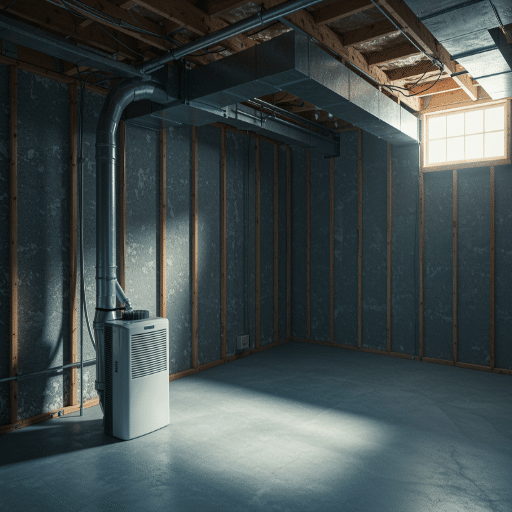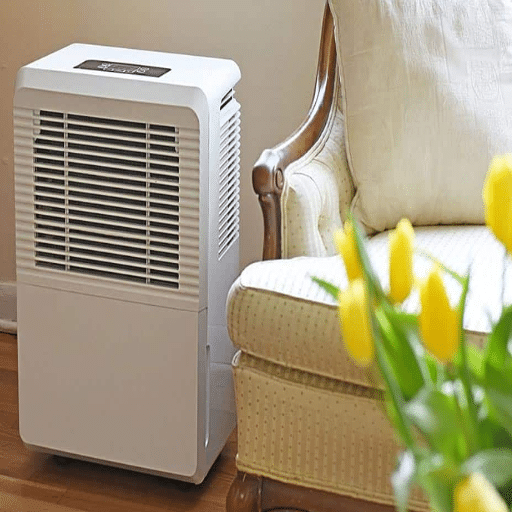It is critical to ensure the humidity of your house is regulated well enough to increase or maintain the lifespan of the structure and the environment. An aspect often ignored is the crawl space; however, if neglected, it could spawn fungal growth, mold spores, and other sources of moisture damage. Installing a dehumidifier in the crawl space is one of the best solutions to reconsider humidity, indoor air quality, and home destruction. This guide aims to provide homeowners with a practical, hands-on, and complete way of installing a crawl space dehumidifier. Be it your first time maintaining the house, or you are already versed in the required tools and practices, this article will provide sufficient knowledge and equipment to perform the task efficiently and effectively.
Why Do You Need a Dehumidifier in Your Crawl Space?

If the humidity in the crawl space goes too high, your home’s structural integrity and hygiene can be compromised. Mold spores and fungus spread quickly in areas with excess moisture, which can lead to health complications caused by lowered air quality. Permanently wet areas can damage wooden structures and attract insects such as termites. If humidity is controlled, the house’s structural integrity will be protected, and the indoor air quality will be enhanced, preventing long-term damage.
Understanding Crawl Space Moisture Issues
Moisture problems in a crawl area are widespread and can have dire consequences for the structure of a house and its residents. Such issues may stem from inadequate ventilation, seepage from the groundwater, or hot, humid conditions where moisture builds without the proper means to take care of it. Suppose these high moisture conditions are not dealt with. In that case, the wood might undergo rotting, and damage to the foundation may occur along with increased levels of mildew and mold, which can be detrimental to the air quality indoors.
To manage moisture in crawl areas, several straightforward interventions should be undertaken. First and foremost, ensure proper drainage is set up around the home so that surface water is not allowed to pool near the structure by landscaping appropriately and ensuring that gutters are working. Another important step is installing a vapor barrier as it stops air inside the crawl space from becoming wet with moisture from the ground. This venting enables ground moisture to be extracted and airflow to be supplied to decrease moisture levels. In homes with high-humidity regions, encapsulating the crawl space with a sealed system offers protection by developing a controlled setting. These techniques can enable homeowners to reduce moisture risks and preserve their properties from permanent destruction.
The Impact of High Humidity on Your Home’s Structure
Increased humidity may damage structural water, causing mold growth, weakening crucial components, and wood rot. Some of the effects that long-term exposure to excessive moisture has on materials such as wood and drywall include decay, sagging, and warping. High humidity and temperature can also increase the chances of pest infestations, termites being one of them, which worsen the existing structural issues. Keeping the humidity level within a desirable range is critical to mitigate the adverse effects of moisture in the home.
Improving Indoor Air Quality and Your Family’s Health
Eliminating sources of pollution is the first stage in ensuring good indoor air quality. Some sources of pollution include pet dander, volatile organic compounds from cleaning solutions, molds, and tobacco smoke. Installing an exhaust fan in bathrooms and kitchens will help with proper ventilation. Additionally, an air purifier equipped with HEPA filters can be installed to remove fine particles.
It is also recommended that HVAC maintenance is done routinely, such as cleaning out air filters and replacing them every 1 – 3 months, to avoid dust from building up. Proper indoor humidity control systems, such as dehumidifiers and evaporative coolers, do a great job of maintaining the desired humidity percentage of 30 – 50%. Apart from employing technological solutions indoors, certain houseplants such as peace lilies and spider plants can also help naturally remove pollutants from the air.
In addition, avoid using strong artificial fragrances and select paints and furniture with low VOC levels. Cleaning routinely and using a HEPA filter to vacuum carpets and upholstery can help remove dust particles that act as allergens. These actions will improve the space inside your home for your family’s respiratory needs and overall sense of health.
How to Choose the Best Crawl Space Dehumidifier for Your Home?
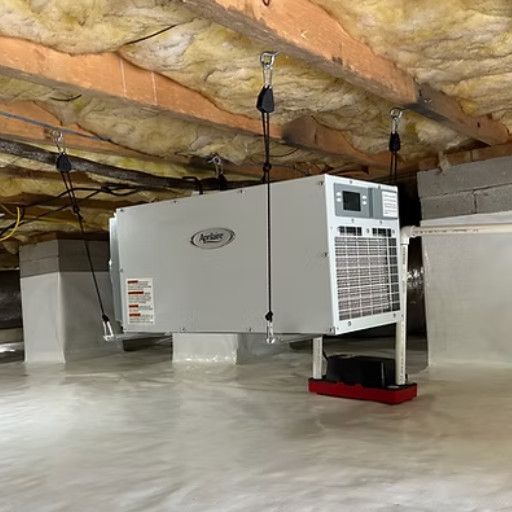
The features of the home crawl space dictate which type of crawl space dehumidifier will work best within it. Identify your crawl space’s size and humidity before calculating the correct pints per day capacity needed in your dehumidifier. Look for energy-efficient models that offer reasonable control over moisture while having a digital display and an auto-drain feature to make maintenance easy. If the model is made specifically for the crawl space, then it will be small and rugged to sustain that kind of weather; buy one. Preferably invest in dehumidifiers with washable air filters so that they can be used for a longer time without interruption, and look for ones with strong warranties. The air quality in your home will improve as long as you don’t buy a dehumidifier that has the potential to damage your home with moisture.
Factors to Consider When Selecting a Dehumidifier
In my opinion, energy usage, capacity, and the specific requirements of an area should be the three significant points to ponder before purchasing a dehumidifier. Tuberous Humidity zones are usually gauged with a humidity zone where a screwdriver moves on both ends of a wooden carpenter’s vise. Itsbotuires these humidity levels while other small rooms can handle being slightly less humid. A smaller room, for example, may allow the use of a battery with only a thousand pints of thrust. At the same time, a large room with high humidity can enable a dehumidifier with high battery capacity.
The energy efficiency of a dehumidifier is a significant feature in terms of environmental protection. Improper or careless use of the dehumidifier may cause enormous harm; if there is only a little moisture, it is better to switch the device off. The other two factors to remember are Energy Star certification and board circuitry, which will release hot or dry air in colder areas, such as the bottom of the basement or inside crawl spaces.
The activities one can perform on their dehumidifier can differ substantially – from loud but highly functional devices to quieter yet troublesome maintenance. For larger devices placed in living areas, it will be beneficial to pick out features that support whisper-quiet modes and zero-type airflow switches that turn off the device’s fans after reaching humidity levels below or equal to twenty percent. Advanced digital ventilation modes also enable real-time air quality filtering and direct electricity usage as required. Properly screening these facets ensures that the dehumidifiers meet their stipulated requirements while maintaining the integrity of the environment or structure.
Top-Rated Crawl Space Dehumidifiers on the Market
The most recommended crawl space dehumidifiers include the ALORAIR Sentinel HD55, the Santa Fe Compact70, and the AprilAire E100 Pro. Aprilaire is a big name for many for its sizeable over-the-room ability to operate with the efficiency of energy use. The Compact70 is a Santa Fe product designed for areas with little space. They are equally high-performing and durable. Furthermore, the ALORAIR heads the tenting style dehumidifier lightweights and tiny basements, ensuring moisture control with added features, such as self-priming pumps to remove water. All these models are strong on reliability and effective in the functions relevant to managing the humidity of crawl spider space.
Energy Efficiency and Cost Considerations
Crawlspace dehumidifiers Australia is focused on long-term operational costs, meaning energy efficiency is essential. While the crawl space dehumidifiers we highlighted above are built to be energy efficient with systems that could include but are not limited to their fans and compressors, there is a plethora of crawlspace dehumidifiers available that comply with the Energy Star standard that we highly recommend ensuring no overpayment occurs for utilities.
Furthermore, the capital outlay must be weighed against the operational and maintenance costs. Units that employ reusable filters and other durable elements will eventually cut down on operating costs. Auto-defrost and built-in pumps are among the features that enhance the reliability of the appliances and save the owner from expensive repairs due to their uninterrupted operation. By choosing the appropriate size for the crawl space, the cost-efficient way to regulate humidity is within reach of homeowners.
Step-by-Step Guide: Installing a Crawl Space Dehumidifier
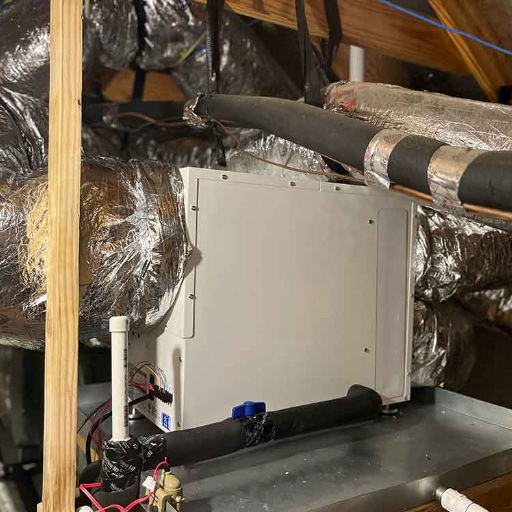
Step 1: Prepare the Crawl Space
Before installation, inspect the crawl space for any standing water, leaks, or structural damage. Ensure all repairs are completed before starting. The space should be thoroughly cleaned of debris, and any existing insulation should be evaluated for moisture-related damage. Ideally, install a vapor barrier to minimize moisture intrusion from the ground.
Step 2: Choose an Appropriate Location
Select a flat, stable surface in the crawl space for the dehumidifier. Ideally, this should be a central location to allow for even moisture reduction throughout the area. Ensure the spot has adequate clearance around the unit for proper airflow, as specified by the manufacturer.
Step 3: Install the Drainage System
Proper drainage is critical to prevent water buildup. Attach a drain hose to the dehumidifier’s outlet, ensuring it slopes downward towards a designated drainage area, such as a sump pump, floor drain, or outside discharge point. For models with built-in pumps, follow the manufacturer’s guidelines for secure hose connections.
Step 4: Secure Electrical Power
Dehumidifiers require a dedicated power source to function efficiently. Check that the crawl space has an adequately grounded GFCI outlet. If an outlet is unavailable or inadequate, consult a licensed electrician to install one that meets electrical safety codes.
Step 5: Position and Stabilize the Dehumidifier
Place the dehumidifier on a stable surface, such as a flat concrete pad or blocks, to ensure it is level. Position the unit to avoid direct contact with walls to promote optimal airflow. Use vibration-dampening pads if necessary to reduce operational noise.
Step 6: Perform a Test Run
Power on the dehumidifier and monitor its operation. Check that the unit effectively draws moisture, the fan functions as intended, and the drainage system correctly expels water. Adjust the humidistat settings based on the manufacturer’s recommendations, generally aiming for a humidity level of 50% to 60%.
Step 7: Perform Routine Maintenance
Schedule regular maintenance to ensure long-term effectiveness. Clean and replace filters as indicated in the user manual, inspect the drain line for clogs and wipe down the unit to remove dust buildup. Periodic inspections ensure the dehumidifier operates at peak efficiency and extends its operational lifespan.
Preparing Your Crawl Space for Dehumidifier Installation
Before deploying a dehumidifier in the crawl space, ensure the space is prepared for efficiency and longevity. Start by determining whether the crawl space has existing issues with moisture like leaks, humidity, or pooling water, and then solve these concerns by sealing the cracks, improving the drainage system, and adding a vapor barrier. After this is done, ensure that there are no distractions by clearing the area around the unit and the unit itself, as this would increase airflow around the unit. Lastly, checking for proper ventilation and insulation helps the unit work more efficiently and consume less energy. These measures guarantee increased efficiency in the dehumidifier and ensure that moisture accumulation in the crawl space does not become an issue.
Proper Placement and Drainage Setup
Proper drainage and placement of the dehumidifier are essential factors that ensure the device’s efficiency and durability. To enable adequate air circulation, position the dehumidifier at the center of the crawl space on a level, unfaltering surface with a minimum distance of 12 inches around the appliance. The unit should never be placed directly in corners or flush against a wall, as this would limit air movement and lower effectiveness.
For moisture control, twist the drain hose of the dehumidifier towards a self-sustained outlet. In case of a lack of gravity drainage provisions, use a condensate pump to remove water to a suitable drainage area. The drain pipe should always be bent directionally in such a case that there is a continuous downward slope, and it also does not have bends, so it is an obstruction-free environment. Blockages due to excessive water can be avoided by doing timely checkups and cleaning the drain line. The correct positioning and drainage arrangement ensure that the dehumidifier works efficiently, thus controlling the moisture in your crawl space with minimum energy usage.
Connecting and Testing Your New Dehumidifier
In order to facilitate and check the operations of your dehumidifier, you will first need to follow the instructions set by the manufacturer, use the drain hose, and attach the power supply. Ensure the hose is well unto the drainage outlet and correctly runs to the disposal position without being blocked. Once the dehumidifier is positioned correctly and all necessary components are plugged in, plug the machine into a grounded power outlet. Switch on the unit and set the humidity level to your desired value, usually between 30% and 50% for a crawl space. Other than that, when starting the unit, look out for water discharge and check the airflow and the system for unusual sounds or error messages to ensure the unit works correctly. These steps should be performed to ensure efficiency in the operations and ensure hardware and software align with proper humidity control values. Regular checkups and maintenance are required to maintain performance further and enhance the dehumidifier’s life.
What Are the Benefits of Crawl Space Encapsulation?
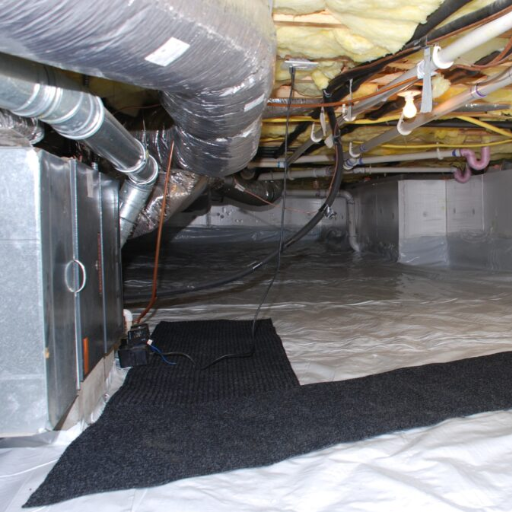
Encapsulating the crawl space offers many advantages that help improve your property’s functionality and health. Installing a vapor barrier around the crawl space significantly decreases moisture levels, inhibiting mold growth, wood decay, and structural damage. Encapsulation also promotes a healthier indoor environment by reducing the intake of allergens, dust, and contaminants into the living spaces. Furthermore, it helps save energy because the HVAC systems do not have to work as hard. After all, insulated crawl spaces conserve temperature better. In the long term, these benefits result in cost savings on energy bills, extended lifespan of the house, and a cleaner and healthier environment.
How Encapsulation Complements Dehumidification
Encapsulation and dehumidification help manage the humidity in your house and avoid moisture issues, which arise when the moisture content is too high. The crawl space encapsulated does not allow moisture or groundwater to penetrate the barrier due to its vapor barrier on top. Encapsulation further enhances the modified atmosphere by reducing the flow of warm and moist air into the atmosphere. Dehumidification, however, reduces the internal humidity by removing excess moisture in the air, in this case, the air in the encapsulated space. Altogether, these techniques ensure a low-humidity environment that is less conducive to fungi, pests, and rot to thrive. Furthermore, encapsulation continues to benefit from this process by facilitating a favorable, long-lasting moisture management system. Overall, these techniques provide better indoor air quality, more energy efficiency, and superior protection in the long run.
The Process of Crawl Space Encapsulation
Crawl space encapsulation consists of a few necessary steps that help in moisture control. First, we remove all debris, mold, and damaged insulation in the crawl space. After that, we check for drainage requirements such as grading the soil or using a sump pump system to prevent water from going under the structure. With the prepared crawl space, we put on a durable vapor barrier primarily made of polyethylene. This is followed by sealing cracks, vents, and the entire room perimeter, turning it into an air-tight space. Moreover, we frequently suggest installing crawl space dehumidifiers for additional protection from excess moisture. Those strategies ensure long-lasting moisture protection, improve energy consumption, and make the air cleaner.
Maintaining Your Crawl Space Dehumidifier for Optimal Performance
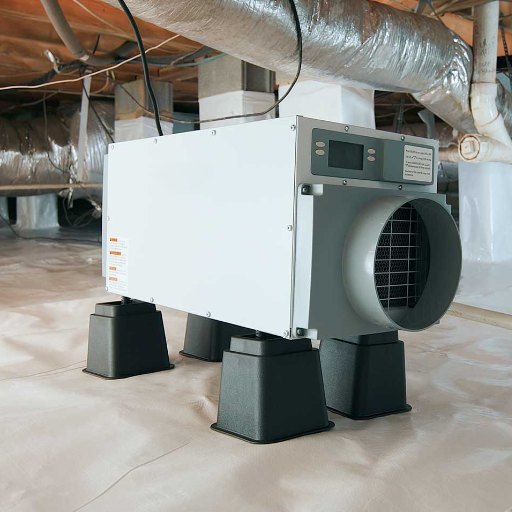
Regular servicing is necessary to maintain your crawl space dehumidifier’s efficiency and expected outcomes. Firstly, ensure that you check and clean your air filter at an interval of 1 to 3 months. If you allow your air filters to clog up, it becomes hard for the unit to push air through, and you’ll notice a decrease in performance. Examine the operation of the water collection basin and direct hose for any possible blockage. Avoid relying on a damp cloth for cleaning as it will only smear the dust and possibly the debris that has settled on the coils, compromising heat transfer over time. A hygrometer will detect humidity levels in the crawl space, where the dehumidifier will best operate at between 30%-50% relative humidity. Finally, ensure that annual checkups are scheduled with professionals who will assess the unit for wear, leakage, or other issues that could hinder long-term usage. All forms of maintenance, from routine to emergency, increase the life expectancy of the dehumidifier and restore the security and dryness of the space underneath your home.
Regular Maintenance Tasks for Your Dehumidifier
I prioritize key tasks to keep my crawl space dehumidifier running effectively. I check and clean the air filter every few months to maintain proper airflow and efficiency. I also inspect the water collection system regularly to ensure no clogs or leaks disrupt its operation. Dust and debris on the coils are removed periodically since these can reduce the unit’s ability to regulate humidity. I monitor the crawl space’s humidity levels with a hygrometer, keeping them between 30-50% for ideal conditions. Lastly, I arrange an annual professional inspection to address potential mechanical issues or wear, ensuring long-term functionality and protection. These steps help keep my dehumidifier efficient and reliable.
Monitoring Humidity Levels in Your Crawl Space
For the proper upkeep of my crawl space, I make it a point to monitor relative humidity levels, and maintaining such levels within the range of 30-50 percent is essential; otherwise, if it goes beyond this threshold, wood rot, pest infestations, structural dryness, and cracking can be observed. A reliable hygrometer is used and tuned regularly to ensure this practice is followed, thereby preventing the risk from worsening further. Using a hygrometer combined with routine maintenance allows me to have a safe and healthy environment within the crawl space.
Common Crawl Space Moisture Problems and Solutions
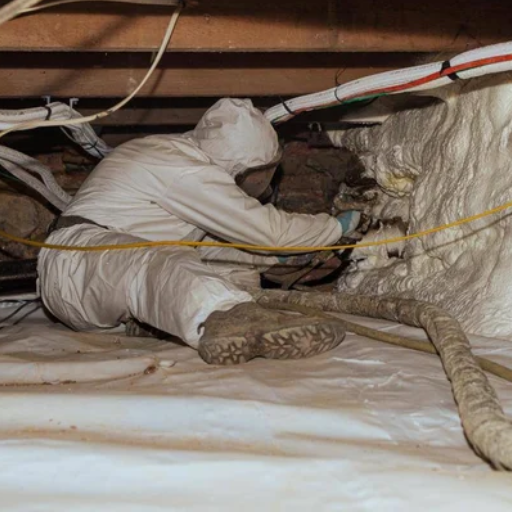
Remediating crawl space moisture issues requires a detailed understanding of the driving factors. Lack of moisture can be an issue of poor ventilation, flooding, or leaking plumbing services. Vapor barriers are installed in the space, and encapsulation is installed to repair any ventilation concerns. A perimeter drainage system and a functional sump relieve groundwater intrusion. Plumbing leaks are addressed by conducting pipe inspections and repairs. These additional activities of monitoring humidity and ventilation ensure continued focus on keeping the crawl space environment moisture-free.
Dealing with Mold Growth and Musty Odors
Crawl spaces can develop mold infestations and musty odors if not thoroughly managed. However, it can be prevented using various multi-pronged methods. Mold tends to grow in a high-moisture environment that lacks air circulation. High humidity levels should be discouraged by encapsulating the area or dehumidifiers. Furthermore, it is necessary to locate any leaks and fix them immediately. Removing existing mold is equally essential for an adore-free environment; this can be done using the appropriate EPA-endorsed mold removal products or hiring a professional mold remediation team for complicated jobs. Mold is frequently associated with musty smells, which can be neutralized by improving the airflow in the area and modifying the ventilation system. Maintaining and often inspecting the crawl space is vital to prevent the odor from being generated altogether.
Addressing Leaks and Drainage Issues
Tackling leaks and drainage issues within a crawlspace efficiently requires determining the problem’s source and then formulating a fix. Firstly, I will inspect the crawlspace thoroughly for cracks, foundations that may have chipped off, or low spots around the house’s edge, encouraging water runoff into the crawl space. For any signs of waterproof sealants on the cracks of a foundation or for ensuring proper grading, they can aid in restricting water intrusion. Additionally, I check the gutter and downspout systems. If I find any flaws, I also replace them, as they are significant in carrying rainwater away from the house’s foundations. French drains and sump pumps are pretty efficient, too, to help cope with excess water and keep a crawl space dry. With this, I can ensure that drainage and leak issues are comprehensively and preventatively resolved.
When to Seek Professional Help for Crawl Space Dehumidifier Installation

When dealing with a crawl space dehumidifier installation, there are times when it makes sense to get a professional’s help, specifically with complex zoomed-out situations. You should certainly try to get outside assistance when dealing with wiring or electrical installation, as it could create installation problems, which are safety hazards. For instance, if your crawl space has a frequent flooding problem or is too humid and facing structural challenges that will make it hard to install the dehumidifier, then reaching out for professional help would be a good idea. They will always be able to inspect the premises and suggest the ideal fit for your needs while ensuring timely and correct installation to enhance the life and working of the equipment and save time on future problems.
Signs You Need Expert Crawl Space Repair
Some problems are a matter of addressing & should be done by crawl space repair specialists. For example, if there is consistent stagnant water or mold on the drywall or while a dehumidifier doesn’t seem to work anymore or shows moisture, there is a lack of proper drainage and waterproofing. Damage to the Structure is another problem we have when we see signs of structural aspects, especially looking at the sagging floors and cracks on the support beams of the foundation. Mold & infectious pests are signs of damp walls caused by inadequate ventilation, requiring professional fixing. Poor moisture maintenance is a sign if the insulation is wet or damaged. But I always keep an expert handy to manage issues then and there to protect my house.
Finding Reliable Crawl Space Dehumidifier Installation Services Near You
It’s important to note that crawl space dehumidifier installation isn’t a task to be handed to just anybody. One must conduct research when finding service providers and ensure they fulfill relevant criteria. Look for moisture control, crawl space repair, or basement waterproofing specialists with the prerequisite skills to conduct such an installation.
Most contractors will often provide documents ranging from their license, insurance, and even vital certificates that display an approval of necessary industry standards. Be sure to ask for a consultation, as such a service can show you just how unique each service provider is. You can also compare prices across different contractors, with the goal being to find the one who meets your criteria of ever reliability and cost. Sticking to your parameters would allow you to find the crawl dehumidifier you need at a reasonable price.
References
Frequently Asked Questions (FAQ)
Q: Why is crawl space dehumidification necessary for homeowners?
A: Crawl space dehumidification is crucial for homeowners because excess moisture in this area can lead to numerous problems. High crawl space humidity can damage your home’s structure, promote wood rot, and negatively impact your home’s air quality. Using a dehumidifier in the crawl space can prevent these issues and keep your crawl space dry, protecting your home’s foundation and improving overall indoor air quality.
Q: How do I know if I need to install a dehumidifier in my crawl space?
A: Signs that you may need to install a dehumidifier in your crawl space include musty odors, visible mold growth, condensation on surfaces, damp insulation, or wood rot. If you’re unsure, consider scheduling a free inspection with crawl space repair experts who can assess your crawl space needs and recommend appropriate solutions.
Q: Can I install a crawl space dehumidifier or hire a professional?
A: While a handy homeowner can install a crawl space dehumidifier, hiring a professional is often recommended. Professional installers can ensure proper placement, electrical connections, and drainage setup. They can also address any other crawl space issues, such as installing a vapor barrier or improving insulation, which can enhance the dehumidifier’s effectiveness.
Q: How do I choose the best dehumidifier for my crawl space?
A: To choose the best space dehumidifier for your crawl space, consider its size, average humidity levels, and the unit’s capacity. Look for a dehumidifier designed specifically for crawl spaces, with features like automatic drainage, frost protection, and energy efficiency. It’s also helpful to read reviews and compare different models to find the one that best suits your needs.
Q: How often should I maintain my crawl space dehumidifier?
A: Regular maintenance is essential to ensure your dehumidifier works effectively. Generally, you should check and clean the air filter monthly, inspect the drainage system quarterly, and have a professional perform a comprehensive crawl space inspection and dehumidifier service annually. This will help maintain optimal performance and extend the life of your unit.
Q: Are there any alternatives to using a dehumidifier in a crawl space?
A: While a dehumidifier is often the most effective solution for controlling crawl space humidity, there are alternative methods to explore. These include improving ventilation, installing a vapor barrier, addressing drainage issues around your home’s foundation, and ensuring proper insulation. To determine the best approach for your specific situation, it’s advisable to consult with crawl space repair experts who can provide a comprehensive assessment and recommend tailored solutions.
Q: How can I find reliable crawl space dehumidifier installation services near me?
A: To find reliable crawl space dehumidifier installation services near you, search online for “crawl space dehumidifier installation near me” or “crawl space repair experts” in your area. Look for companies with positive reviews, proper licensing, and experience in crawl space moisture control. Many reputable companies offer free inspections, so take advantage of these to get professional advice and compare options before deciding.


